|
|
|
 |
When the “Dead” are Alive
Posted on 28 May 2018, 9:34
In the history of mediumship there have been cases in which the “spirit” communicating through the medium turned out to be still alive in the flesh. Such discoveries provided good laughs for the self-righteous debunkers, who accepted it as clear-cut evidence that the medium was a fraud. The possibility that telepathy can take place between living humans or that mediums can pick up messages from other living humans does not seem to have been given any consideration by the militant “skeptics.”
John Edmonds, chief justice of the New York State Supreme Court and one of the first psychical researchers, told of an old friend – one he had not heard from in 15 years – communicating with him through the trance mediumship of his (Edmonds’) daughter, Laura. Edmonds assumed that his old friend was dead, but was surprised to learn later that he was still among the living. “I have known since then many similar manifestations,” Edmonds wrote, “so that I can no longer doubt the fact that at times our communications are from the spirits of the living as well as the dead.”
As mentioned in the last blog post here, Eddie Rickenbacker, (below) a highly decorated World War I fighter pilot, was working for the Secretary of War during WWII when a plane on which he was a passenger went down in the Pacific Ocean. Indications were that nobody survived. However, two weeks after the plane’s disappearance, medium Eileen Garrett received a telepathic message that read, “Tell Adela I’m sorry I made her get out of the taxi and walk – but I’d do the same thing all over again.” Although Garrett didn’t know who the message was from, she knew an Adela – Adela St. Johns, a renowned journalist – and passed the message on to her, mentioning that she could tell that the person who sent the message was alive. The message made perfect sense to St. Johns, Rickenbacker’s friend, who recalled having to walk two miles as a result of the taxi ride with Rickenbacker. A week or so later, Rickenbacker and six others were found alive in a life raft. After returning to New York, Rickenbacker told St. Johns that he didn’t know who Eileen Garrett was, but he did admit to thinking about the taxi incident while adrift.

Beatrice Gibbes, a researcher who dedicated much of her life to observing and assisting Geraldine Cummins, a famous Irish automatic writing medium, reported on a case involving Mrs. Napier Webb, an old friend of Miss Cummins’ in a 1945 issue of Light magazine. Webb was seriously injured in a hunting accident during March 1944. Brain surgery was performed during May and it was considered doubtful that she would survive it. On the evening of May 25, Gibbes and Cummins were supposed to go to tea and then a film in London, but Cummins had a sudden urge to write. After Cummins was seated and went into a trance with pen in hand, Astor, her spirit control, communicated that a strange woman was close by but he didn’t know what she wanted. Before Gibbes, who was seated at the table, could finish telling Astor to ask her who she was and what she wanted, the pen appeared to be seized and wrote “Tid Webb.” Tid was the pet name of Mrs. Webb. She wrote: “My dear Geraldine. It is strange how my thoughts have gone out to you in this dreadful time. I am in two worlds. I am not dead but I may be soon. I can’t talk to anyone. I want to tell them things: how I was with B___ (her son killed in Hong Kong early in the war). He took me into a world so brilliant I can’t describe it. This is just a little visit to beg you, if you go over to Ireland, not to lose sight of my darling…(her only daughter). The boys are all right but she is so young…The doctor has been here and I could see that he still thinks I have a little chance – that I may struggle back, and I want to so much, perhaps I shall. If I don’t recover, promise me you will do as I ask.”
Gibbes replied to Webb, explaining that Cummins was in a trance but that she would inform of her of the request as soon as she was fully conscious. Webb replied: “Oh, Miss Gibbes. Of course I see you now. Thank you so much. Now that queer cord is beginning to pull at me.” Gibbes asked her if she was in a coma at the time. “I saw my body lying there and I am still bound to it by a silvery cord – a bit frayed, you know,” Webb responded.
Astor took back control and told Gibbes that he did not think that the woman had passed over because he could see the cord of life still there. But he could tell that she was in and out of her body. A mutual friend later wrote to Cummins and said that Mrs. Webb was still alive but that she appeared to be “half or more than half with the others, and only comes back with an effort when one comes in and speaks.” She died about three months after the sitting.
Similarly, trance medium and clairvoyant Gladys Osborne Leonard reported seeing and communicating with her husband’s spirit body before he actually died. With a nurse watching over her husband, who had been very ill for a number of days but seemed to be improving, Mrs. Leonard took a walk on the beach outside of their cottage. She became aware of a vague, shadowy form walking next to her and talking to her. “Don’t worry, little woman, don’t worry,” her husband told her. Thinking he might have died, Leonard raced home and found her husband in a deep sleep. When he awoke he told her that he had been out on the seafront and was talking to people, although he did not remember talking to Gladys. “This experience made me quite certain that my husband’s soul body was loosening its hold on the physical counterpart in spite of the recent improvement in his condition.
The great German polymath Johann Wolfgang von Goethe reported that while he was walking with a friend one day, he was halted by an apparition of another friend, Frederick, who was believed to be in another city at the time. When Goethe started speaking to Frederick, the friend walking with Goethe, thought he had gone mad, as he saw nothing. When Frederick vanished, Goethe wondered if his friend had died. Upon arriving home, Goethe discovered that Frederick was there, having a little earlier arrived in Weimar from his town, and then having gone to sleep in an arm chair while waiting for Goethe to arrive home. Frederic then related a dream he had had while sleeping in the arm chair. He encountered Goethe and described the scene and words used by Goethe when Goethe saw him.
Prior to his death in the Titanic disaster of 1912, William T. Stead, (below) a British journalist, learned to do automatic writing, receiving many messages from an old acquaintance, Julia Ames. Curious as to how Julia could write with his hand, Stead requested an explanation. “She told him that his mind was not “trammeled by the limitations of matter” and thus he was a good “instrument.” She further told him that he could also receive messages from his friends still alive in the earth realm in much the same way. “All minds are in contact with each other throughout the whole universe,” Julia explained, “and you can always speak and address any person’s mind wherever that person may be, if you more or less know that person.” She added that “your real self, what you would call your Ego, sits behind both your physical senses and your mind, using either as it pleases.”
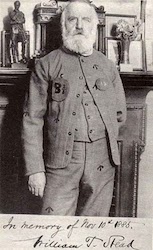
Stead decided to experiment by asking a lady in Gloucestershire to sit at 10:30 a.m. and try to make something known to him in London. They were to immediately post a letter to each other, she telling him what she was trying to communicate and he telling her what he received. Upon receiving the woman’s letter, Stead was disappointed, noting that he had captured only one of seven distinct statements. But a few days later, he received another letter from the woman stating, “This is more wonderful than anything. You know that you have scarcely written anything that I willed you to write, but you have written nearly everything that kept bobbing into my mind without my will at all. When I was saying to myself, ‘I want to tell you so and so,’ it kept coming into my mind, ‘tell him so and so,’ and I thought, ‘No, that is of no interest to him,’ or ‘that will only trouble him,’ and you have got all the things written down in London that kept coming as it were spontaneously into my mind at Gloucestershire at the time that I was willing to write another set of things.”
The spirit “control” for another medium told Stead that he had a “very loose soul.” When Stead asked what that meant, it was explained to him that his soul is very loosely connected to his body and thus he was “able to allow other minds to be hitched on” to his hand. Those whose souls are closely knit, he was further informed, are not able to be used in that way.
Back to the Rickenbacker case, one might wonder why the message came through to Garrett that Rickenbacker was sorry about the taxi incident when he later told St. Johns that he recalled laughing about it and said that he would do it again. One might surmise that Rickenbacker’s “higher self” was in fact sorry but his ego got in the way of admitting it. It was his “higher self” – his “spirit” – that somehow found Garrett and communicated, not his “lower self.”
All that is no doubt too much for the militant skeptics to absorb in their tightly knit souls, but there is much more evidence, including some more recent in the area of out-of-body experiences, lending itself to such an explanation.
Michael Tymn is the author of The Afterlife Revealed: What Happens After We Die, Resurrecting Leonora Piper: How Science Discovered the Afterlife, and Dead Men Talking: Afterlife Communication from World War I.
Next blog post: June 18
Read comments or post one of your own
|
 |
Adela Rogers St. Johns , A Famous Journalist, Explored Mediumship
Posted on 21 May 2018, 8:29
Grieving the World War II death of her son Bill, Adela Rogers St. Johns (1894-1988), a renowned American journalist and screenwriter, contacted Eileen Garrett, the most famous medium of the day, not telling her why she wanted to meet with her. Shortly after the grieving mother entered Garrett’s Manhattan apartment, the medium said, “Well, here’s Bill.” As far as St. Johns (below) knew, Garrett did not know she had a son named Bill. Clairvoyantly looking high up at the otherwise invisible figure of Bill, Garrett said he appeared to be wearing a British uniform. In fact, Bill, who stood 6-7, was a member of the Royal Canadian Air Force, which he joined before the United States entered the war.
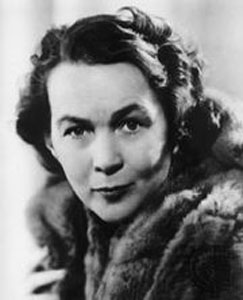
St. Johns told of her experiences with Garrett in her book, No Goodbyes, published in 1981. She stated that Garrett probably had the most “commanding presence” she had ever encountered in a woman. And, she had known many dynamic women, including Eleanor Roosevelt, Wallis Simpson, Anne Morrow Lindbergh, Jeane Dixon, Ethel Barrymore, and Gloria Swanson, to name just some.
Through Garrett, Bill asked his mother to stop grieving for him so that he could get on with his life. “Pray for me, Mama. Pray for all of us here. It helps us advance,” Garrett transmitted. St. Johns noted that Bill was the only one of her children who called her “Mama.” A debunker would say that Garrett had prior information, but St. Johns did not think so.
Before St. Johns left Garrett’s apartment, Garrett (below) told her that the person waiting downstairs in the lobby for her had mediumistic abilities and could further contact Bill for her, if necessary. In fact, St. Johns’ adult daughter, Elaine St. Johns, was waiting in the lobby, but she did not know how Garrett knew that, nor did St. Johns have any idea that her daughter had such a gift. Elaine, also ignorant of her ability, was brought upstairs to meet Garrett, who explained automatic writing to her. She further mentioned that it was Bill who told her that his sister had the faculty for automatic writing.
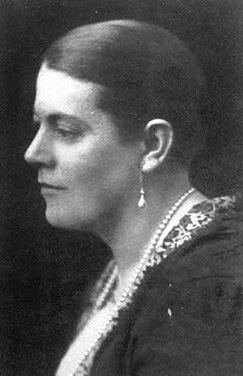
Until her visit with Garrett, St. Johns’ interest in psychic matters had been casual. She recalled that when Elaine was only four years old she shocked her by telling her that Ross wanted her (St. Johns) to tell his mother that he can’t come to the attic. Ross was identified as Ross Snyder, the son of the mayor of Los Angeles, where St. Johns lived and worked at the time. He had been killed on a World War I battlefield. Although Elaine had never met Ross, she provided other evidential information about him, and St. Johns felt compelled to invite Mrs. Snyder to tea and tell her about the messages.
Upon hearing of her son’s message concerning the attic, Mrs. Snyder fainted. When she came to, she explained to St. Johns that she had for months kept Ross’s room as he had left it before he entered the Army. However, his belonging were eventually moved to the attic and she would go in secrecy to try to get a message from Ross. She told nobody, not even her husband, about her attempts to communicate with Ross.
There had been no other indication over the next 20 years that Elaine had any kind of psychic ability, and Elaine was somewhat reluctant to give automatic writing a try. However, at her mother’s insistence, Elaine made an attempt, failing several times before finally establishing contact with her brother. Concerned that she was imagining the responses, Elaine asked for something evidential. The pencil wrote, “The lady in the picture is my bombardier’s mother.” Neither Elaine nor her mother knew what picture Bill was referring to. Some days later, St. Johns received a letter from Bill’s commanding officer, explaining how Bill kept his damaged plane flying while ordering his crew to bail out before crashing into some farm land. She also received a letter with a photo from Bill’s navigator. It was of Bill’s flag-draped casket with his crew standing around at attention. There was also an attractive matronly woman in the photo. St. Johns wrote to the navigator to thank him and request the identity of the woman in the photo. The navigator wrote back that it was the bombardier’s mother.
Word of Elaine’s gift got around. One day, a German refugee, who had been a writer in her homeland, approached St. Johns at a press club meeting in New York and asked her if Elaine might be able to get a message from her deceased husband, who had been a successful surgeon. The request was passed on to Elaine, who, with pencil in hand, gave Bill the man’s name and asked her brother if he could contact the man and get a message from him for his wife. Shortly thereafter, the pencil took off, writing page after page, initially in English but then in German, complete with umlaut marks over certain vowels. “Bela, my madonna, I made such a mistake,” the writing began. When St. Johns passed the writing on to the grieving widow, she was informed that her husband had frequently referred to her as his Madonna, and had committed suicide.
Still another interesting experience involved Billy deBeck, the artist who created the “Barney Google” cartoon. After deBeck’s death from cancer, his wife Mary was heartbroken. While having lunch with Mary, St. Johns told her friend about Elaine’s ability. When Elaine was asked to see if she could get a message from Billy, the pencil didn’t write. Instead, it began to sketch. It was a drawing of a woman walking a dog on a leash. However, the woman had no feet. When the experience was related to Mary deBeck, she excitedly explained that Billy had some kind of mental block against drawing feet and would always have an assistant draw the feet of his cartoon characters.
When Mac, Elaine’s adopted brother, heard of her automatic writing, he called it all nonsense and demanded that Bill, his best friend as well as his older brother, give him some evidence. Elaine sat down at the table with pencil and received a lot of gibberish. Elaine sensed that Bill was laughing, after which Bill asked Mac to put out his hands. Mac did so and watched his fingers curl up into a fist and then begin to shake, all outside of his control. It was apparently enough to convince Mac that Bill was there.
After marrying Paul Gallico, a famous writer, Elaine and her husband traveled in Europe. They struggled with language differences in every country, except Germany. Somehow Elaine communicated fluently in German, although she didn’t realize she was hearing or speaking German until her husband commented on it and asked why she had never told him that she spoke German. She informed him that she wasn’t aware she could speak or understand German. It all seemed like English to her. Upon leaving Germany, she could no longer speak or understand the language.
St. Johns also recalled a strange communication coming to her through Eileen Garrett from Eddie Rickenbacker, a highly decorated World War I fighter pilot. When in New York City, she and Rickenbacker frequently dined together and attended various functions. On one occasion, as they were on their way to a hotel in a taxi, Rickenbacker told the taxi driver to stop and let them out, that they would walk the last two miles to the hotel. The long walk angered St. Johns and she made no secret of it. Some time later, after the start of World War II, Rickenbacker was doing defense work for the Secretary of War when the plane he was a passenger on went down in the Pacific. Indications were that nobody survived the crash.
Two weeks after the plane’s disappearance, St. Johns received a telephone call from Garrett, telling her that she received a message that read, “Tell Adela I’m sorry I made her get out of the taxi and walk – but I’d do the same thing all over again.” Garrett said she did not know who the message was from, but she was sure the person is alive. After 23 days in a life raft, Rickenbacker and six others were found alive. When St. Johns next saw him she asked him about the message. He said he didn’t even know who Eileen Garrett was, although he recalled thinking about the taxi incident and how annoyed St. Johns had been while adrift in the ocean.
“It is understandable, I suppose, that there should be so many skeptics,” St. Johns concludes the book. “We live in an age when people question everything. Often, however, people are unwilling to accept the answers. This is particularly true in the area of psychic experience, especially with the experience of contact with someone we regard as dead. Most people believe that there is an existence of some kind after death, but the confusion sets in when they try to define that existence and its relationship, if any, with those of us who are living. Either people become too simplistic or too mystical, and one result of this can be doubt.”
Michael Tymn is the author of The Afterlife Revealed: What Happens After We Die, Resurrecting Leonora Piper: How Science Discovered the Afterlife, and Dead Men Talking: Afterlife Communication from World War I.
Next blog post: June 4
Read comments or post one of your own
|
 |
Were the Las Vegas shooter and Austin bomber possessed?
Posted on 07 May 2018, 10:04
Authorities involved with the investigation of the Las Vegas shooting massacre and the more recent Austin bombings are mystified as to what motivated such deviant, insane behavior. Neither the shooter nor the bomber seems to have had anything in his past to suggest he was capable of such a horrendous act. There is, however, a possible explanation that no authority dares mention, as the person would be ignorantly laughed out of his profession if he or she did. I’m referring to possession, or even lesser influence by devious “earthbound” spirits.
In her 1999 book, Freeing the Captives, the late Louise Ireland-Frey, M.D. (below) discussed various degrees of attachment or influence by dark souls, beginning with the most mild, temptation, and continuing on through shadowing, oppression, obsession, and possession. Possession, as she defines it, involves the invading entity taking over the body of the host completely, pushing out the host’s own personality (soul) and expressing its own words, feelings, or behaviors while using the host’s body.
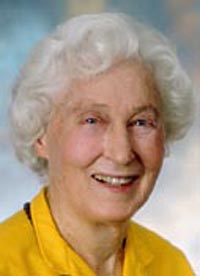
In his 2003 book, Healing Lost Souls, William J. Baldwin, Ph.D., a pioneer in regression therapy, says that, based on many sessions, he is convinced that “past-life trauma and spirit interference are the primary causes in many cases of mental and physical illness.” He explains that within six months of starting his past-life regression therapy practice, more than half his clients showed signs and symptoms of “spirit attachment.”
The terminology differs among various practitioners, some seemingly holding obsession and possession as much the same thing, others referring to spirit interference, influence or attachment. As for driving off the negative spirit entities, some refer to spirit releasement, others to disobsession, and still others to deliverance or exorcism. However, they all appear to be talking about the same phenomenon.
As Ireland-Frey and others who have recognized the attachment phenomenon have pointed out, like attracts like and so a deceased alcoholic may look for a living alcoholic to feed off of, while a sex addict when alive will likely look for someone with a similar tendency.
Brazil seems to be much more open-minded and advanced in this area of healing than the United States, as evidenced by the book Spiritism and Mental Health, edited by Emma Bragdon, Ph.D. In this 2012 publication, subtitled “Practices from Spiritist Centers and Spiritist Psychiatric Hospitals in Brazil,” Bragdon reports that there are 50 Spiritist psychiatric hospitals in Brazil. In addition to the more standard treatments, including various medications, the Spiritist hospitals include disobsession, “and healing at a distance where mediums liberate patients from the influence of negative spirits.”
According to Bragdon, the doctors practicing in the psychiatric hospitals of Brazil do not believe that the brain is the home of the mind and the spirit, and therefore cannot endorse the notion that chemicals are the primary means of treating mental disorders. “They believe that vast aspects of the mind and spirit reside outside the physical brain in the ‘perispirit,’ a subtle body that envelops the physical body and holds the blueprint of the body and the seeds of illness,” she explains. “The perispirit changes as it is worked with in Spiritist therapies – seeds of illness are dissolved and the receiver becomes spiritually uplifted.”
In Chapter 3 of Bragdon’s book, Alexander Moreira-Almeida, M.D., Ph.D., professor of psychiatry at the University of Săo Paulo medical school, states: “Obsession ultimately originates in the moral imperfections of the patient. The patient’s own negative feelings, thoughts, and behavior allow the obsessing spirit to mentally tune into the individual, as well as make the patient accept its influence. The obsessing spirit is motivated most of the time by a vengeful feeling against the victim.”
Moreira-Almeida further explains that most of the Spiritist approach to the treatment of such cognitive disorders grew out of the research carried out by French educator Allan Kardec (1804-1869). He quotes Kardec: “Obsession one day will be recognized as a cause of mental disorders, just as is accepted today the pathologic action of microscopic living creatures whose existence nobody even suspected, before the invention of the light microscope.”
Kardec cautioned against confusing pathological madness with obsession, pointing out that the latter is not a result of brain damage but “derives from the subjugation that malevolent spirits exert over certain individuals even though the obsession often has the appearance of madness itself.”
Joan Koss-Chioino, Ph.D. is identified in the book as a professor emerita in the School of Human Evolution and Social Change at Arizona State University and also visiting professor of psychiatry and neurology at Tulane Medical Center. She states that recent neuroscience research is determining why some persons are vulnerable to being overwhelmed by spirit intrusion or autonomous complexes in the way (pioneering psychiatrist Carl) Jung proposed.” She adds that “Jung recognized the meaning and relevance of widespread experiences of spirits framed by a theory that accounts for the sharing of psychological processes – between those who are ‘normal’ and able to exert control over the disruptive effects of either spirit visitations or autonomous complexes, and those who cannot.”
Andrew Powell, a British psychiatrist, tells of a patient called Pat, who had suffered from depression for many years, apparently because her mother often mocked and belittled her. Things did not improve after her mother died, as she could feel her mother’s presence all around her. She felt that her mother was possessing her and she became suicidal. In soul-centered therapy session, the mother communicated and explained that she had become pregnant at age 17, thereby ending her hopes and dreams, and that her daughter thus became the life-long target of her resentment. After Powell convinced the mother to “walk towards the light,” Pat appeared to be at peace.
Doctors Roberto Lucio Viera de Souza and Jaider Rodrigues e Paulo tell of a patient named “Ernesto” who suffered from thoughts of murders and destruction, as well as self-destruction and other negative acts. He underwent 12 electroconvulsive therapy sessions with little progress. After clairvoyants detected that he was dominated by a group of “spiritual villains,” he received magnetic therapy (chakra cleansing and energy transmission). “Response to this therapy was clearly positive and fast,” the doctors reported.
In the Foreword of Bragdon’s book, James Lake, M.D., a California psychiatrist, states that “the Spiritist movement in Brazil is a truly integrative model of mental health care that addresses the core issues of mental illness taking into account patients’ medical, social, cultural, and spiritual needs.”
“A new breed of therapist is healing the mentally ill not with talk and drug therapy, but by releasing troublesome or malevolent spirits who have attached themselves to their victims,” says Dr. Stafford Betty, (below) professor of religious studies at California State University at Bakersfield. “I am not talking about religious healers like Francis McNutt, but secular healers, some of them licensed psychiatrists or psychologists, who have discovered, often by accident, that this new therapy works better than what they learned in medical or graduate school. They tell us that too often drug therapy only masks symptoms, and talk therapy reaches only as deep as the patient’s conscious mind can go. But ‘spirit release’ usually heals, often permanently. Not only does it heal the client; it heals the attached (or ‘possessing’) spirit.”
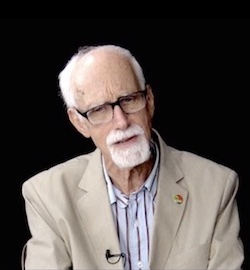
In an article for the Journal of Religion and Health (“The Growing Evidence for ‘Demonic Possession’: What Should Psychiatry’s Response be?), Betty notes that M. Scott Peck, a Harvard-educated psychiatrist and author of the best-seller, The Road Less Traveled, startled the psychiatric community in 1983 by describing his participation in two exorcisms, while stating that the mental state of the two patients was dramatically improved. “Before the voices were in control of me, now I’m in control of the voices,” one of the patients was quoted by Peck.
Betty’s research suggests that genuine cases of possession are rare, perhaps applying to extreme cases like Charles Manson, and that most people are merely “oppressed” by the earthbound spirits, although using Ireland-Frey’s terminology they might be “obsessed.”
Since it is “unscientific” to even acknowledge the existence of a spirit world, it doesn’t seem likely that mainstream American mental health practitioners, mired in a materialistic paradigm, will ever accept the idea that mental illnesses originate anywhere but in the brain. Nevertheless, Professor Betty says he has seen some progress in the psychiatric community, although usually not publicly. He adds that his 2005 article, which is posted on academic.edu has received over 14,000 views and over 550 downloads. So there is a little hope that American mental health experts will eventually see the light.
Michael Tymn is the author of The Afterlife Revealed: What Happens After We Die, Resurrecting Leonora Piper: How Science Discovered the Afterlife, and Dead Men Talking: Afterlife Communication from World War I.
Next blog post: May 21
Read comments or post one of your own
|
|
|
|